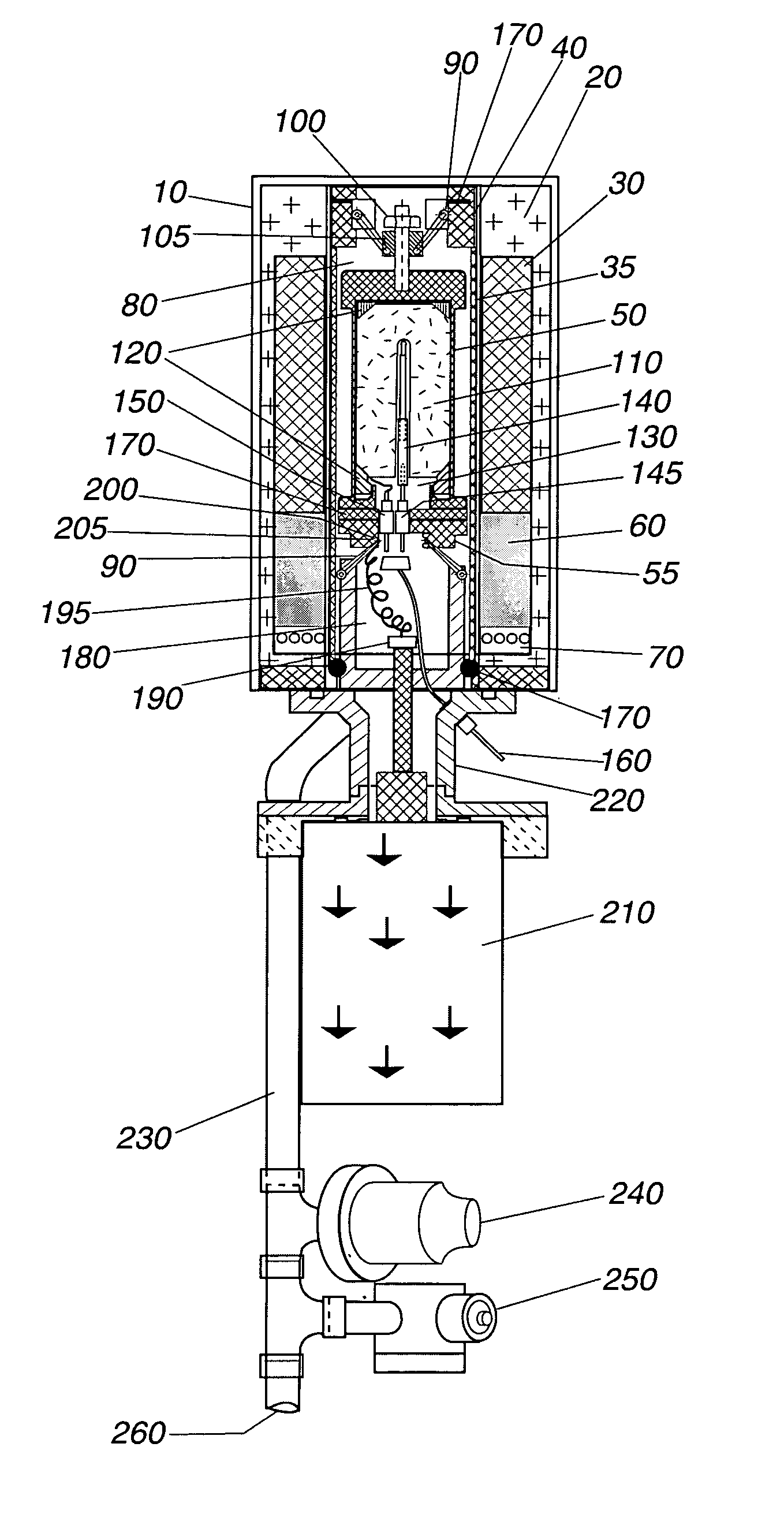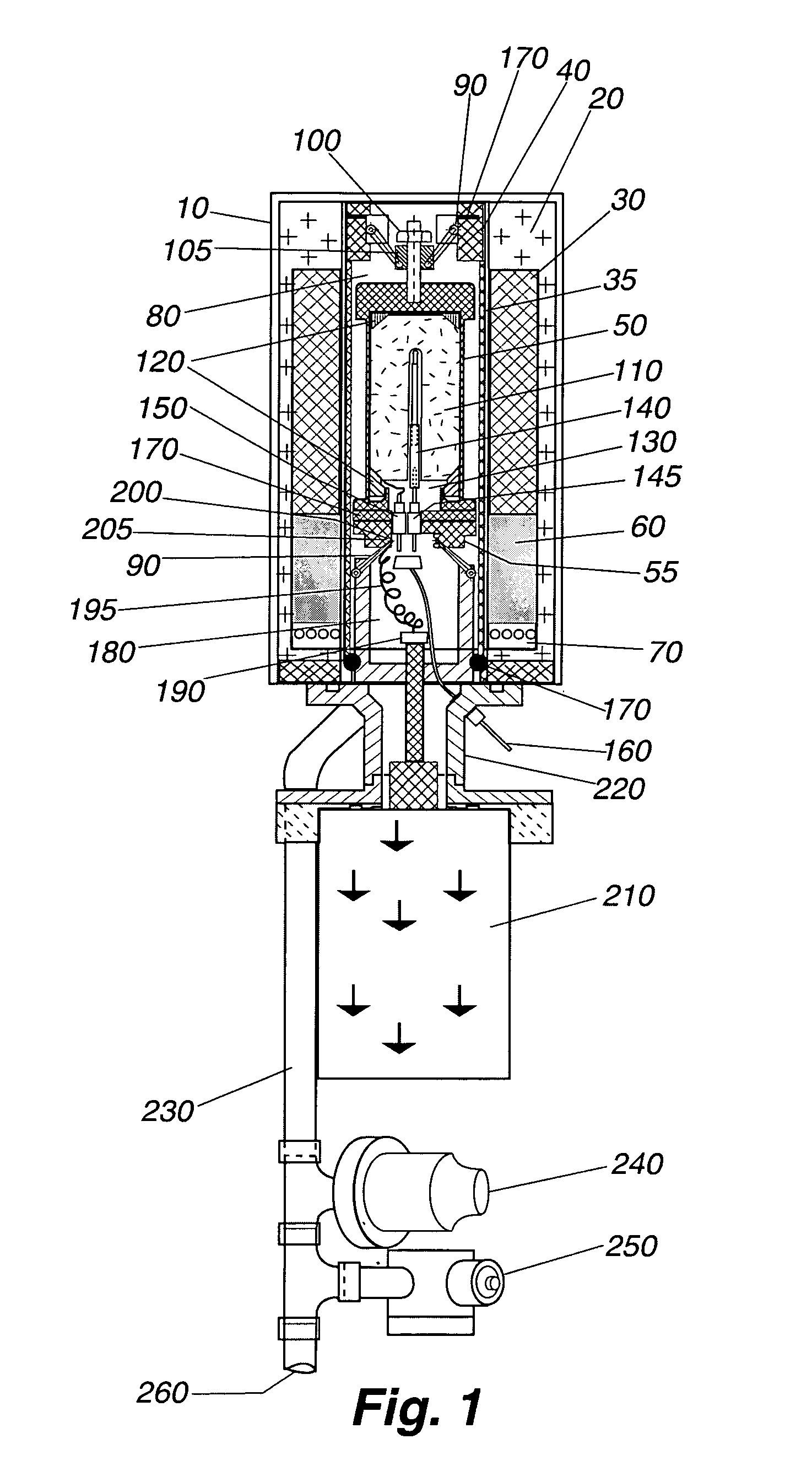Handheld isotope identification system
a technology of isotope identification and handheld isotope detection, which is applied in the direction of optical radiation measurement, material analysis using wave/particle radiation, instruments, etc., can solve the problems of inability to introduce nuclear materials within, sodium iodide has a relatively low energy resolution of de/e 8–10%, and inorganic scintillators are only somewhat better
- Summary
- Abstract
- Description
- Claims
- Application Information
AI Technical Summary
Benefits of technology
Problems solved by technology
Method used
Image
Examples
Embodiment Construction
[0019]The present invention is directed to a portable handheld radioisotope identification system utilizing a miniaturized high-purity germanium (HPGe) detector, two He3 neutron detectors, and a compact electronics package with power source.
[0020]The design of the handheld radioisotope identification system centers around the use of an advanced, miniaturized HPGe detector. The base design of the HPGe detector follows conventional understandings of semi-conductor diode gamma ray detectors. Gamma rays pass through the casing of the detector and interact with a HPGe crystal. The characteristics of the crystal structure lead to the incident gamma rays creating electron-hole pairs along the path taken through the crystal. The electron-hole pair is analogous to the ion pair created in gas-filled detectors. Their motion in an applied electric field generates an electric signal. This signal is then carried out of the detector to an electronics package that processes the signal to determine ...
PUM
| Property | Measurement | Unit |
|---|---|---|
| lengths | aaaaa | aaaaa |
| lengths | aaaaa | aaaaa |
| energy resolution dE/E | aaaaa | aaaaa |
Abstract
Description
Claims
Application Information
 Login to View More
Login to View More - R&D
- Intellectual Property
- Life Sciences
- Materials
- Tech Scout
- Unparalleled Data Quality
- Higher Quality Content
- 60% Fewer Hallucinations
Browse by: Latest US Patents, China's latest patents, Technical Efficacy Thesaurus, Application Domain, Technology Topic, Popular Technical Reports.
© 2025 PatSnap. All rights reserved.Legal|Privacy policy|Modern Slavery Act Transparency Statement|Sitemap|About US| Contact US: help@patsnap.com



